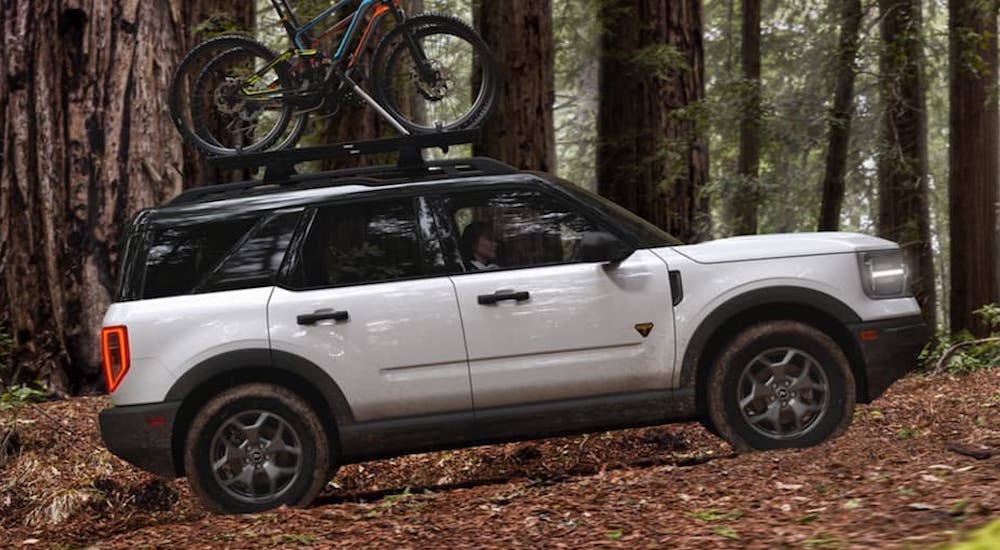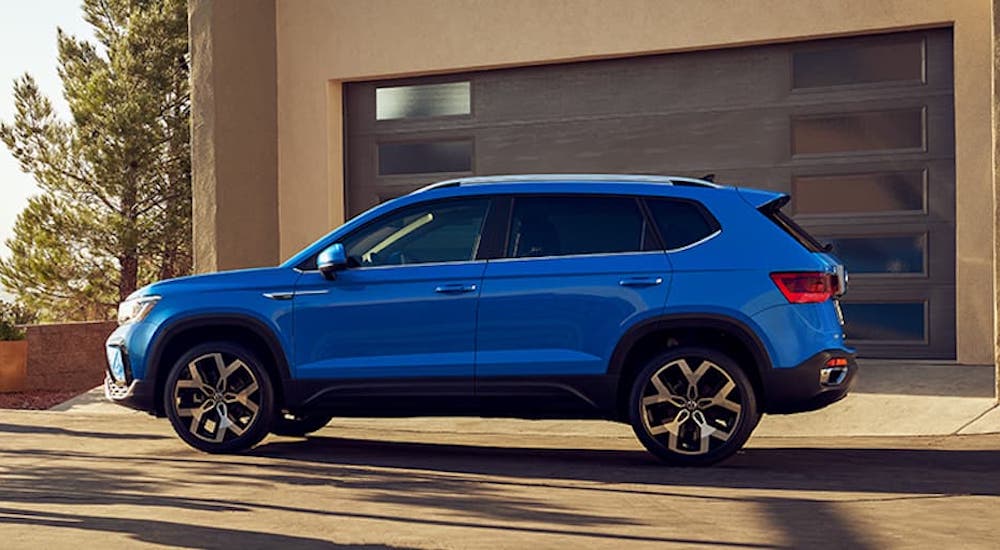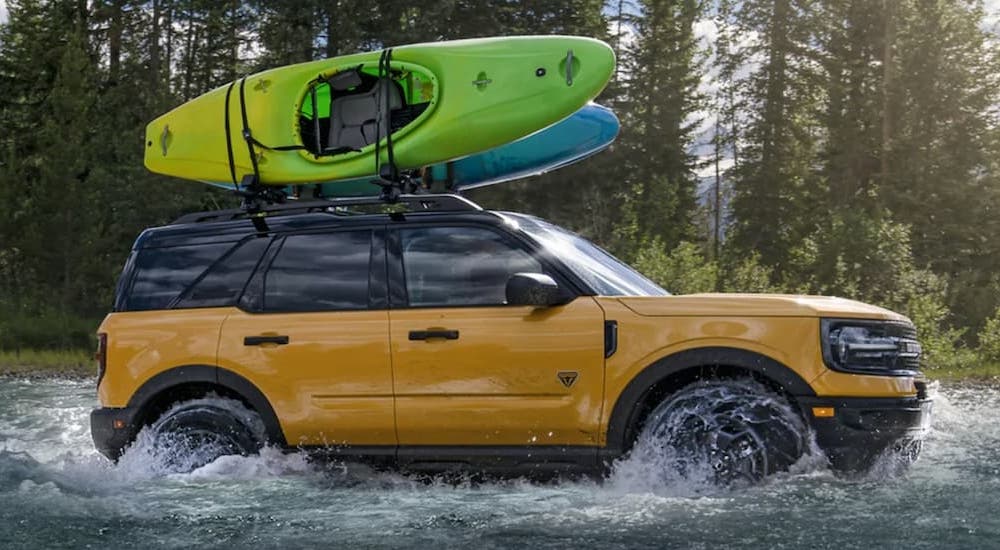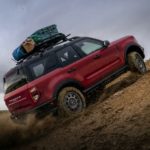The subcompact crossover SUV market is popular and has lots of options in it; you might even go so far as to call it overcrowded in terms of just how many models you can choose from. When a new vehicle gets dropped into this big pool, it’s easy for it to make a minor ripple rather than a big splash––yet a big splash is underselling just how much attention Ford got when it introduced the Bronco Sport alongside its bigger sibling, the Bronco. The Bronco Sport has been incredibly hard to get due to some delays and because Ford is struggling to keep up with the overwhelming demand.
With so many subcompact SUV models out there, I was curious as to why the Bronco Sport gained so much attention while others have received much less. To get a sense of why this might be, I thought it would be helpful to compare it to another subcompact model––one that has also just become available since it only seemed fair to look at it against another brand-new vehicle. So, let’s take a look at the 2022 Ford Bronco Sport vs 2022 Volkswagen Taos to see how they compare and get to the bottom of what it is about the Bronco Sport that has created so much excitement.
Differences in Engines and Performance
To make this comparison, I pulled up the specs and details on these two vehicles, and I was immediately struck by the differences between them in terms of their engines. We’re looking at subcompact crossovers here, so I’m not expecting sports car performance, but I’m very much from the school of thought that every vehicle should have a good engine. Every car, truck, and SUV should feel good to drive and be rewarding when you get behind the wheel, but Ford seems to get that much more than Volkswagen does.
The Volkswagen Taos has one engine: a 1.5L Turbo I-4 that puts out 158 hp and 184 lb-ft of torque. The model comes with front-wheel drive (FWD) standard, but all-wheel drive (AWD) is available. With FWD, the engine is paired with a simple eight-speed automatic transmission, though models with AWD come with a seven-speed dual-clutch transmission. Overall, the Taos is fine but not particularly exciting––AWD and the dual-clutch are definitely the standout here and seem more enjoyable.
Once I looked at the Ford Bronco Sport, then the shortcomings of the Taos really became apparent. The Bronco Sport has two engines available, starting with a 1.5L EcoBoost Turbo I-3 that delivers 181 hp and 190 lb-ft of torque––we’re already off to a better start than Volkswagen can offer. However, there’s an available 2.0L EcoBoost Turbo I-4 that increases output to 250 hp and 277 lb-ft of torque, which is a massive improvement and provides exceptional power for a subcompact model. Both engines come paired with an eight-speed automatic, and four-wheel drive (4×4) is standard on the Bronco Sport––we’ll get into why this is a bit later on.
If we take the Volkswagen Taos as a decent example of what the auto industry thinks subcompact drivers want in terms of power, it becomes easy to see why people noticed the specs on the Bronco Sport. The starting power is solid, but the available engine really takes it to the next level. Even if we looked at nothing else about the Bronco Sport, I’d understand how Ford got people talking about this model and why folks are still clamoring for it, even though you can’t find one, rather than settling for a different subcompact crossover.
Differences in Design
Full disclosure: most of my analysis of these two vehicles will revolve around specs and quantitative statements––except for this part. Just looking at these two crossovers, you can see a pretty big difference in how they were designed. I mean this from a purely aesthetic perspective–the designers at Ford went in a very different direction than a lot of SUVs out there, while Volkswagen definitely played it safe.
The Bronco Sport looks unique; it has big round headlamps, a front grille you can’t help but notice, and a boxy shape that works well as a companion to the larger Bronco. By comparison, the Volkswagen Taos looks like a standard subcompact crossover––if I saw it and wasn’t paying much attention, I wouldn’t be able to tell you what model I was looking at. The Bronco Sport is unmistakable, and that’s the first step toward a design that becomes iconic (I’m not saying it’s there yet, but there’s clearly an effort). Love it or not, it’s unique while still feeling familiar enough to be something that catches the eye in all the right ways.
Focused Engineering vs General Practicality
One of the biggest standout features of the Ford Bronco Sport is that it was designed and engineered to be an absolute off-road beast. By contrast, the Taos was built for general daily use, and if you take it off-road a bit, you better hope things don’t get too rough. Not everyone cares about going off-road, of course, and that’s fine––but the goal with the Bronco Sport was clearly to make a new option to take onto the trail, and Ford passed with flying colors.
This is why every Bronco Sport comes with 4×4 standard; Ford wanted to make a clear statement that this was a subcompact SUV designed to eat up the trail. Every model features Ford’s new Goes Over Any Type of Terrain (GOAT) terrain management system with five GOAT Modes: Sand, Slippery, Sport, Eco, and Normal. The highest trim, the Badlands, tops that with two more Modes: Mud/Ruts and Rock Crawl––perfect for more demanding off-roading. There’s much more than that, of course, like available Trail Control (essentially cruise control for going off-road), an off-road HOSS suspension, and available Falken Wildpeak all-terrain tires.
By comparison, the Volkswagen Taos is clearly meant for general, practical use––it’s there for your daily commute and running errands. Still, if you choose a model with the available 4Motion AWD system, you get four selectable drive modes: Snow, On-Road, Off-Road, and Off-Road Custom. This isn’t bad by any means, but you can see that it’s really aimed more at daily driving needs rather than losing yourself on the weekend by hitting the trail. It’s not inferior, but it disappears into the background noise of every other subcompact crossover with similar drive modes, while Ford’s GOAT Modes definitely stand out and get noticed.
What Did Ford Do Right With the Bronco Sport?
I could keep going, but you already get the idea––even if you look at things like tech features and safety features, the Bronco Sport gives you everything you need standard, while the Taos needs all of its optional packages just to keep up. Available features are great, sure, but the fact that a tiny 6.5-inch infotainment display is standard on the Taos, an all-new 2022 model, is a bit underwhelming, especially when the Bronco Sport comes with a standard eight-inch screen. Once you factor in that the Bronco Sport comes with a suite of standard advanced driver-assist features on every model, while many similar features are only available options on the Taos, the differences become much more severe.
Honestly, the Bronco Sport stands out because Ford released a new subcompact crossover SUV that does everything right. It has a powerful engine, focused engineering that allows it to thrive in pretty much every driving situation, a design that’s provocative and unique without being overdone, and great standard tech features. With such a crowded market, this is exactly what manufacturers need to do if they want to successfully compete. Sadly, Volkswagen failed to make this kind of splash, and I feel the Bronco Sport will be remembered long after the Taos is forgotten.






